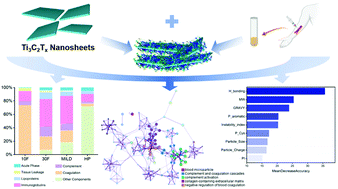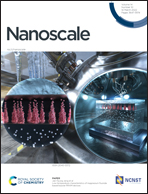Investigation of interaction between MXene nanosheets and human plasma and protein corona composition†
Abstract
The composition of protein corona affects the behavior and fate of nanoparticles in biological systems, which strongly relates to the intrinsic properties of nanoparticles and proteins. Here, three types of MXene Ti3C2Tx nanosheets are prepared by different etching methods, and certain physicochemical characteristics of the nanosheets before and after exposure to human plasma (HP) are characterized. The Ti3C2Tx nanosheets with protein coronas suffer more easily from aggregation than pristine Ti3C2Tx. The composition of protein coronas by LC-MS/MS-based label-free proteomic analysis reveals a high overlap of protein types and functions but a significant difference in relative protein abundance for the three Ti3C2Tx. Immunoglobulins and coagulation proteins are highly enriched while albumin is depleted in the coronas compared with their abundance in original HP. The random forest classification model predicts that the main driving forces for the adsorption of HP proteins on Ti3C2Tx are hydrogen bonding, steric hindrance, and hydrophobic interaction. This study provides insights into the colloidal stability of Ti3C2Tx nanosheets and their interaction with human plasma proteins.



 Please wait while we load your content...
Please wait while we load your content...